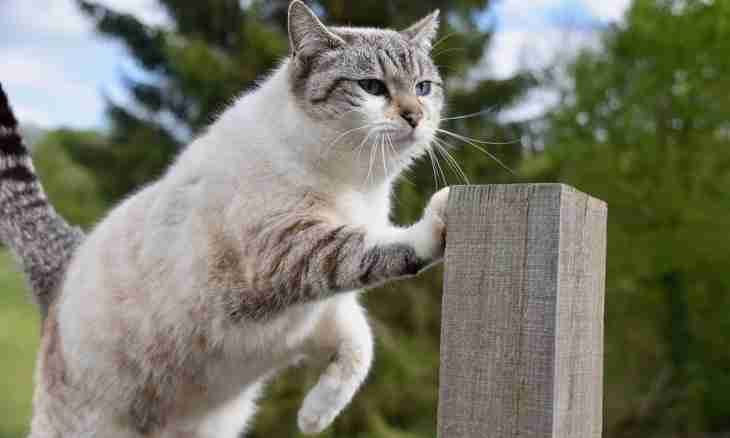Even those cats who never go outside in the absence of vaccination risk to get sick – as a virus source in this case the person who brought an infection on footwear acts. If the pet walks, then it has to be surely imparted from the most widespread diseases.
Instruction
1. Panleukopenia is considered the most dangerous disease affecting cats. Its symptoms are substantial increase of body temperature, a loss of appetite up to total rejection of food, the vomiting and a diarrhea arising owing to damage of digestive tract, often the disease terminates in a lethal outcome. The virus is resistant to heating and processing by disinfectants, exists without carrier till 1 year therefore it can get to the house even on clothes of the person. Primary and repeated vaccination of kittens is carried out at the age of the 2nd and 3rd months, then repeats annually.
2. Cats, as well as people, have cold too, however at them this illness can proceed much heavier and pour out in kalitsiviroz. Symptoms: temperature increase, appearance of sores on a mucous mouth and a nose, plentiful allocations from eyes, lameness, in some cases – sneezing with office of a phlegm. And even after recovery the animal during long term, and sometimes and all life is a carrier of an infection. The inoculation is carried out to the same terms, as previous, and the vaccine against these diseases is combined and is on sale under the brands Purevax RCP, Nobivac Tricat, Leucorifelin, Fel-O-Vax.
3. All above-mentioned means of a trekhkomponentna, and one more of their element is the vaccine against the rhinotracheitis called in the people cat's flu. Its symptoms are easily recognized: temperature, cough, loss of appetite, office of a phlegm from a nose and a throat. Respectively, kittens take root in 2, 3 months and further one time in a year.
4. The same vaccines can include also the fourth component which is absent in the calendar of inoculations of not walking animals – from clamidiosis. It is given sexually or from a cat to kittens at their incubation. Signs of the desease are the strongest allocations from a nose and a mouth as these places are surprised most of all. Kittens are younger than 3 months still are insufficiently developed and incapable to transfer an inoculation – the chronic disease of a nasopharynx therefore it is necessary to put it only on reaching this age, for example in 3 and repeatedly in 4 months can become a consequence.
5. Unlike previous, rage is a disease with inevitable death, and are subject to it and people therefore each walking cat has to be imparted by Nobivac Rabies, Defensor or multicomponent Quadricat. The revaccination is not required therefore it is put in 3 months and then annually.
